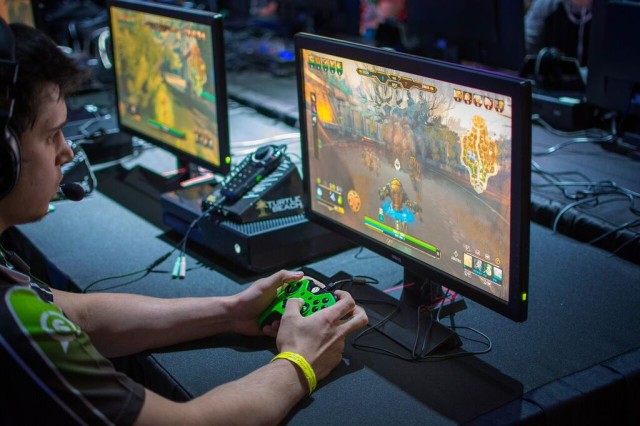This week, we learned that people are willing to pay more for live experiences, but not news. As always, we take a peek at what millennials are up to as well as the future of technology.
Look, Internet, No Hands!
Garner Analysts predict that by 2020, 30 percent of web browsing sessions will be conducted without a screen. With the rise of voice-activated technology like Google Home and Amazon Echo, consumers will not be limited to traditional screen-based browsing, Gartner predicts, especially since web browsing will be extended to other areas of daily activities such as driving and exercising. The company also believes that by 2020, 100 million consumers will shop in augmented reality, and that the Internet of Things (IoT) will save consumers and businesses $1 trillion a year in maintenance, services and consumables.
What Is A VIP Experience Worth?
A lot, according to a survey by StubHub. When asked what they would sacrifice to watch their favorite band/musician/sports team/athlete perform live, the results are rather interesting. Not surprisingly, 42 percent would work on a major holiday but other results border on the disturbing—11 percent would go without toilet paper for a week, for example. “Sorry, babe, I’m leaving you for the band,” may be heard more often than you think—seven percent of those surveyed said they would break up with his/her partner for a VIP experience.

That’s A Whole Lot Of Games
Video games aren’t going anywhere soon, and analyst firm DFC Intelligence has released a new report predicting software sales to reach $98 billion by 2020. For the current year, DFC expects game sales to be up 8 percent to $79 billion.
“A major area of growth is occurring as digital products are able to embrace a more premium business model where consumers are willing to pay top dollar upfront for digital content,” DFC analyst David Cole noted in a press release. “This is a major change in the recent mindset where games are given away for free and forced to rely on a freemium business model that simply does not work for many games.”
African American Millennials Love Their Tech
Nielsen’s latest report entitled, Young, Connected and Black: African-American Millennials Are Driving Social Change and Leading Digital Advancement reveals a strong and growing demographic. Second only to Asian Americans, 91 percent of African Americans own a smart phone and 91 percent say they access the Internet on a mobile device, an increase from 86 percent in 2015. Not only that, but more than half (55 percent) of African American millennials report spending at least one hour a day on social media, which is six percent more than all millennials, and 29 percent say they spend at least three hours a day on social media—nine percent more than all millennials.
Get With the Program
Amazon and Netflix have officially invested more in programming—$7.5 billion last year—outspending giants like CBS, HBO and Turner. The World TV Production Report 2016 by IHS Technology explores how TV producers are adapting to the era of internet TV. “The levels of investment we are seeing from Netflix and Amazon are only topped by Disney ($11.84 billion) and NBC ($10.27 billion),” said Tim Westcott, senior principal analyst at IHS Technology. Programming is big business, one that is currently led by the United States. IHS estimates that in 2015, the US represented 33 percent of worldwide expenditure on TV programming, with $43 billion invested across free-to-air, pay TV and online.
Millennials Love TV . . . But With A Catch
When it comes to watching TV, the coveted millennial demographic consumes the most content at an average of six hours per day. However, millennials don’t have time for nonsense. Fifty four percent report to have “show dumped,” that is, given up on a show they previously enjoyed, because it became too difficult to access the content. A report by TiVo reveals that 91 percent of millennials pay for at least one subscription streaming service, 73 percent have streaming devices at home and 55 percent would pay to simplify search across platforms.
Extra! Extra! Millennials Aren’t Buying It
With the decreased popularity of print media, news outlets that have moved online are attempting to recoup losses through paid content. While 55 percent of US millennials pay for digital entertainment, only 25 percent are willing to pay for some kind of digital news service. A new report by Business Insider notes that publications are questioning their pay-for-content models in order to reach this demographic. “Most legacy publishers have already adopted digital paywalls, but few digital natives have them in place,” Business Insider reports. “In 2015, 77 out of 98 US newspapers tracked by the American Press Association have implemented digital paywalls. However, none of the top digital native publishers have yet to ask readers to pay for content.”
I’ve Got A Twitter Hashtag THIS BIG
Pain relief brand Excedrin cashed in on election year madness by purchasing a promoted trend ad with the hashtag, #DebateHeadache. The campaign resulted in 46,000 Twitter mentions on Wednesday during the presidential debate between Donald Trump and Hillary Clinton, according to social analytics firm Talkwalker. That number represents a 3,100 percent increase compared to the prior day.
Frustration only makes the #DebateHeadache worse. Relieve your headache fast with Excedrin®. pic.twitter.com/WwIH2Qrh6c
— Excedrin® (@Excedrin) October 20, 2016

